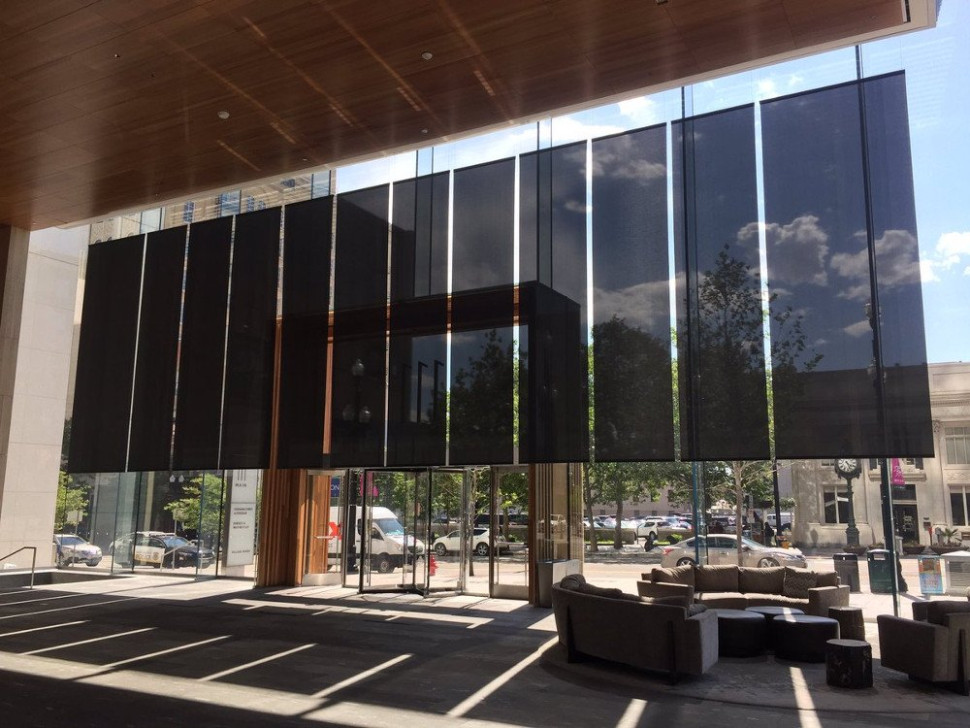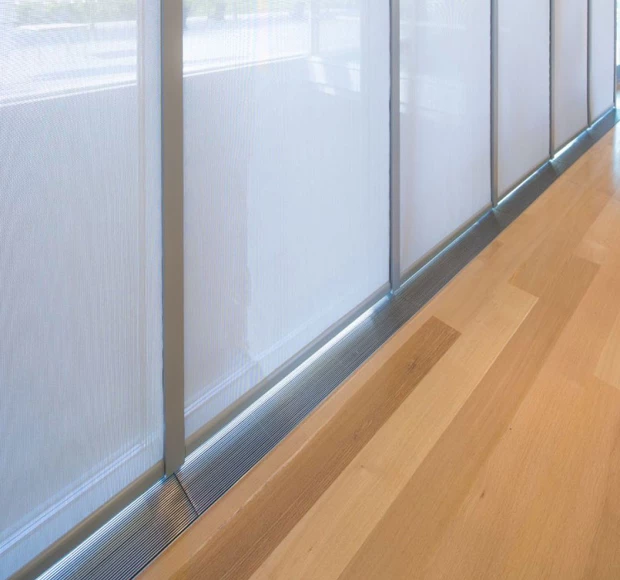In our previous two blog posts, we explored how daylight harvesting (or daylighting) improves energy efficiency through harnessing the power of sunlight, thereby aiding Boston in its mission if implemented properly. We looked at Lutron’s Hyperion system before, and now we’ll be discovering another active daylighting system that can help Boston on its way to becoming carbon-free by 2050: Mecho’s award-winning SolarTrac 4.0.
Mecho Solar Trac
SolarTrac’s proprietary algorithms precisely predict the sun’s position based on time, date, building location, and orientation of glass facades, in combination with rooftop radiometers that detect live conditions. Rooftop radiometers complement these algorithms by determining live conditions and reporting them, so that the shades adjust accordingly. Shades are automatically adjusted to optimize daylight entering a space and alleviate solar glare for a more comfortable and productive environment. SolarTrac also reduces solar-heat gain, which aids in reducing energy costs by decreasing demands on cooling systems.The state-of-the-art SolarTrac 4.0 daylighting system is extremely user-friendly, with self-diagnostics alerting users to potential maintenance needs, and PC-based software supporting smartphone access and allowing up to 100 users at the same time. SolarTrac’s automation can be configured to meet the needs of a single floor, façade, building, or entire campus.

SolarTrac 4.0’s precise daylight harvesting can save up to 70% in lighting costs. By improving energy efficiency through decreased demand for electric lighting, utilization of SolarTrac allows for excess electric energy from a building to be diverted elsewhere. Elimination of unnecessary energy usage via daylight harvesting will go a long way in helping Boston with its challenging carbon-free endeavor.
Stay tuned for our next blog post, where we’ll be examining Somfy’s animeo IP daylight harvesting system, taking into account its various features and impact on energy consumption and efficiency.

